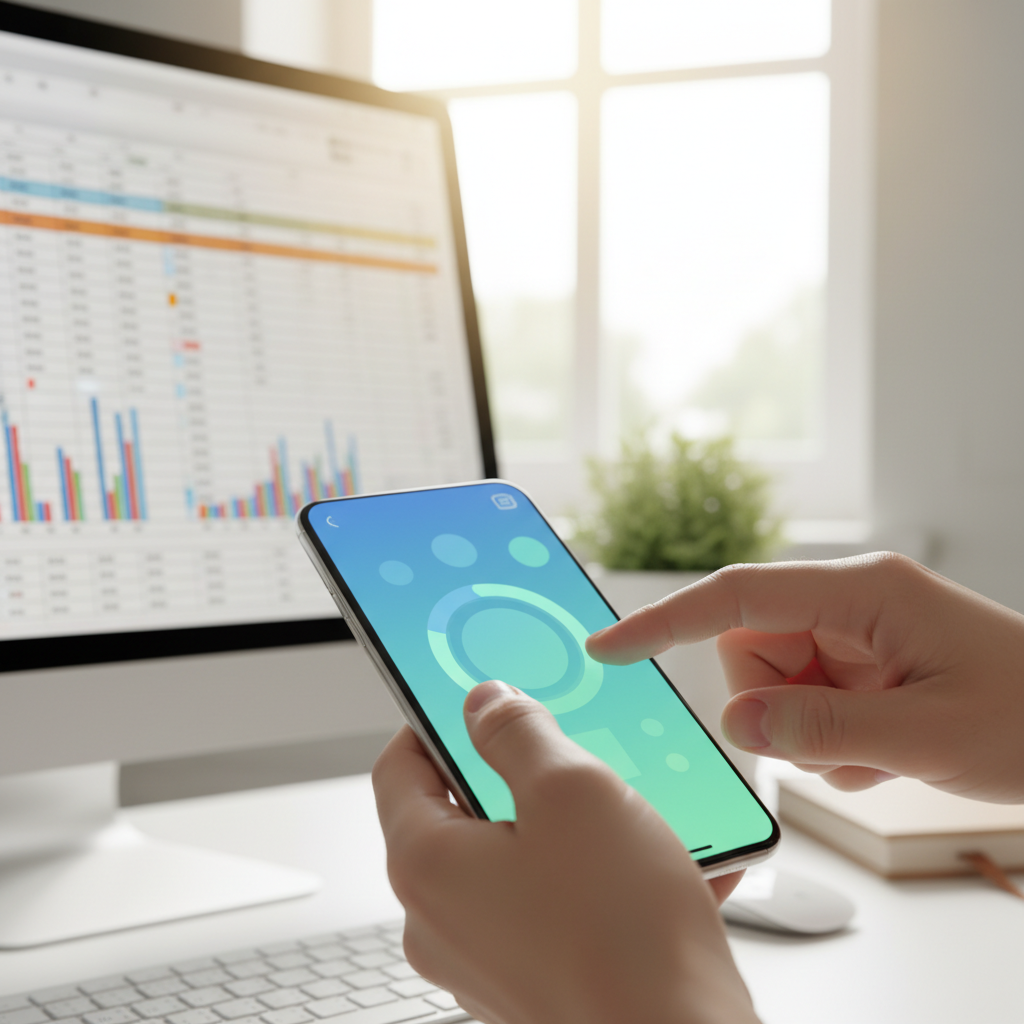
Table of Contents
Introduction
Picture this: your car breaks down on a Tuesday morning, and the repair estimate hits you like a punch to the gut—$1,200. Or maybe it’s a surprise medical bill that your insurance doesn’t quite cover. How does that feel? If you’re like most people, there’s probably a knot forming in your stomach right about now. That’s where an emergency fund comes in—it’s not just money sitting in an account, it’s your peace of mind in financial form.
Here’s the thing about emergencies: they have terrible timing. They show up when you’re already stretched thin, right after you’ve paid all your bills, or just when you thought you had everything figured out. And the stats? They’re pretty sobering. Nearly 60% of Americans can’t handle a $1,000 emergency without going into debt. That means six out of ten people you know are one car repair away from financial stress. But here’s the good news—you don’t have to be one of them.
Now, figuring out how much to save can feel overwhelming. Should it be $1,000? Three months of expenses? Six months? The answer isn’t the same for everyone, and that’s okay. It depends on your situation—how stable your job is, whether you have kids, what your monthly bills look like. Want to boost how much you can save each month? Sometimes the best strategy is increasing what’s coming in. Learning how to negotiate a salary increase can be a game-changer for your savings rate. And if you’re wondering how to get a clear picture of where your money’s actually going, understanding how to analyze financial statements will help you spot exactly where you can cut back and save more. Even techniques from planning big expenses (like those found in guides about how to budget for a wedding) can teach you how to prioritize and track your spending effectively.
Once you start building that fund, where do you actually put the money? This isn’t about getting rich quick—it’s about keeping your emergency cash safe and accessible when you need it most. You want it earning a little something while it sits there, but you also need to be able to grab it fast if life throws you a curveball. Understanding the difference between checking account and savings account is a great starting point for choosing where to park your emergency cash. And while we’re not talking about putting this money in risky investments, it doesn’t hurt to understand your options. Getting familiar with concepts like the difference between stocks and bonds helps you make smarter decisions about where emergency funds belong (spoiler: not in volatile investments).
What You’ll Learn in This Guide
Think of this guide as your roadmap to financial breathing room. Whether you’re starting from zero or looking to beef up what you’ve already got, we’re going to cover everything you need to know.
- Understanding the Importance: You’ll see exactly why an emergency fund isn’t just nice to have—it’s essential for avoiding debt and sleeping better at night when life gets unpredictable.
- Determining the Right Amount: We’ll help you figure out your magic number based on your real life—your expenses, job situation, and family needs—so you’re not guessing.
- Building Your Fund Step-by-Step: Get practical, doable strategies for budgeting, finding extra money to save, and setting up systems that make saving automatic (because willpower alone isn’t enough).
- Choosing Safe Storage Options: Learn where to actually keep this money so it’s there when you need it, earning a bit while it waits, but not tied up in investments you can’t access quickly.
Want to keep learning beyond this guide? Check out some of the best finance podcasts for beginners—they’re perfect for your commute and will keep you motivated on this journey. Plus, hearing other people’s money stories makes you realize you’re definitely not alone in figuring this stuff out.
We’re going to break this down piece by piece, giving you clear steps and real strategies you can actually use. No matter where you’re starting from—whether you’ve got $50 or $5,000 to work with—you can build something that protects you from financial emergencies.
By the time you finish reading this, you’ll have a clear plan for creating (or improving) your emergency fund. You’ll know exactly how much to save, where to keep it, and how to get there without completely derailing your current lifestyle. Sound good? Let’s dive in and build you some serious financial peace of mind.

Introduction
Let’s talk about emergency funds—because honestly, they’re probably the most underrated superhero in your financial toolkit. Think of it this way: you wouldn’t drive without car insurance, right? Well, an emergency fund is like insurance for your entire financial life. It’s that safety net that catches you when the unexpected happens (and trust me, it will happen). Whether it’s a surprise medical bill, your car deciding to break down on the worst possible day, or suddenly finding yourself between jobs, having that cushion changes everything. Instead of panicking and reaching for credit cards, you can breathe. You can make smart decisions instead of desperate ones. We’re going to walk through exactly how much you should save and, more importantly, how to actually make it happen without feeling like you’re depriving yourself of everything fun.
Determining How Much to Save for Your Emergency Fund
Here’s where things get personal—because your emergency fund isn’t going to look like your neighbor’s, your sister’s, or that finance guru’s on social media. The “experts” throw around numbers like three to six months of expenses, but that’s just a starting point. Your real number? It depends on your life, your worries, and what helps you sleep at night. Maybe you’re a freelancer whose income jumps around like a caffeinated kangaroo—you might want eight months saved up. Or perhaps you’ve got the most stable job in the world and excellent health insurance—three months could work just fine. The key is starting with a clear target that motivates you rather than intimidates you. And here’s something most people don’t think about: understanding the key differences between checking and savings accounts can make a huge difference in how efficiently you manage this money.
Now, let’s get practical about figuring out your magic number. Start by looking at your monthly essentials—and I mean the real essentials, not the “I can’t live without my premium coffee subscription” essentials. We’re talking rent or mortgage, utilities, groceries, insurance, minimum debt payments. The stuff that keeps a roof over your head and food on your table. Got kids? Factor in childcare, school expenses, and all those little costs that add up faster than you’d expect. Working in a volatile industry or earning commission? You’ll want to lean toward the higher end of that savings range. Here’s where it connects to something bigger: learning how to analyze financial statements gives you incredible insight into your overall financial picture and helps you make smarter decisions about your emergency fund size.
Factors to Consider When Setting Your Emergency Fund Goal
Let’s break down what really matters when you’re figuring out your target. Each of these factors tells a different part of your financial story:
- Monthly Expenses: This is your foundation—the absolute minimum you need each month to keep your life running. Include housing, utilities, food, transportation, and healthcare. Don’t forget those sneaky recurring expenses like phone bills and insurance premiums.
- Dependents and Family Needs: Kids change everything, don’t they? So do aging parents or anyone else counting on your income. Factor in special needs, education costs, medical expenses, and remember that emergencies often hit families harder than individuals.
- Job Stability and Income Variability: Be honest about your work situation. Seasonal work, contract positions, or commission-based income all scream “save more.” Even if you love your job, industries change, companies restructure, and sometimes good people get caught in bad situations.
- Health and Insurance Coverage: Take a hard look at your insurance deductibles and what’s not covered. That gap between what insurance pays and what you owe? That’s emergency fund territory right there.
Once you’ve crunched these numbers and really thought about your unique situation, you’ll have a savings target that actually makes sense for your life. It’s not about following someone else’s formula—it’s about building a financial buffer that works for you and your circumstances. Ready to turn that target into reality? Let’s dive into the practical stuff that actually gets money into your account.
Practical Steps to Build and Maintain Your Emergency Fund
Okay, here’s where the rubber meets the road. Building an emergency fund doesn’t have to feel like financial torture—I promise. The secret is making it as automatic and painless as possible. Start by taking a magnifying glass to your spending. (Yes, even that daily latte might need to be questioned.) But here’s the thing: budgeting for a big goal like this follows the same principles as how to budget for a wedding—you identify what matters most, cut what doesn’t, and redirect that money toward your priority. The magic happens when you automate the whole process. Set up an automatic transfer from your checking to a dedicated savings account, and suddenly you’re saving without even thinking about it.
Want to supercharge your progress? Look for ways to boost your income and funnel every extra dollar into your fund. That could be picking up a side gig, selling stuff you don’t need, or dedicating windfalls like tax refunds and bonuses to your emergency savings. (I know, I know—using your tax refund for savings instead of that vacation hurts a little. But future you will thank present you.) The key is consistency over perfection. Even $25 a week adds up to $1,300 in a year. And here’s a pro tip that most people overlook: understanding how to use credit cards responsibly means you won’t accidentally sabotage your savings progress with high-interest debt that eats away at your progress.
What You’ll Learn in This Guide
Here’s your roadmap to emergency fund success—no fluff, just the strategies that actually work:
- Set a Budget and Cut Unnecessary Expenses: Time for some financial detective work. Track every dollar for a month (yes, every coffee, every impulse Amazon purchase). You’ll be amazed at where your money actually goes. Then ruthlessly cut the stuff that doesn’t add real value to your life and redirect those dollars to your fund.
- Automate Your Savings: This is the game-changer. Set up automatic transfers so saving happens before you can spend the money on something else. Start small if you need to—even $50 per paycheck builds momentum and creates the habit.
- Earn Extra Income: Whether it’s freelancing, driving for a rideshare company, or selling items online, extra income can fast-track your emergency fund. The beauty is that this money doesn’t compete with your regular budget—it goes straight to savings.
- Choose the Right Account: Keep this money separate from your checking account (trust me on this) but accessible when you need it. A high-yield savings account or money market account gives you growth without risk. Avoid investments here—this isn’t the money you gamble with.

You’ve made it this far—and that says something about your commitment to financial security. Building an emergency fund isn’t just another item on your financial to-do list. It’s your safety net, your peace of mind, your “I can handle whatever life throws at me” fund. And honestly? Once you have it, you’ll wonder how you ever lived without it.
Think about what we’ve covered together. You now know how to figure out exactly how much you need (hint: it’s not the same for everyone). Your monthly expenses, job situation, family needs—they all matter. This isn’t about hitting some magic number you read online. It’s about creating a cushion that actually works for your life. When your car breaks down or your kid needs emergency dental work, you’ll have a plan instead of panic.
The strategies we walked through? They’re not rocket science, but they work. Start with your budget—yes, that word everyone loves to hate. Track where your money goes (you might be surprised). Set up automatic transfers so saving happens without you having to think about it. Got a side gig opportunity? Great. Tax refund coming? Even better. Every little bit adds up faster than you think. And remember—keep this money somewhere safe and accessible. You want it when you need it, not tied up in investments that might be down when emergency strikes.
Here’s what really matters: knowing when to use it and when not to. Medical bills, job loss, major repairs, unexpected travel for family emergencies—these are the real deals. Your friend’s wedding in Bali? Not so much. And when you do dip into it, make rebuilding a priority. Think of it as maintaining your financial insurance policy.
Ready to take this even further? Your emergency fund is just the beginning. Consider learning how to negotiate a salary increase—because more income means faster saving and better financial security overall. Want to get serious about your money management? Understanding how to analyze financial statements gives you the tools to make smarter financial decisions. And while you’re building that emergency fund, make sure you’re not sabotaging yourself with debt—check out how to use credit cards responsibly. If you’re still getting your banking basics down, learning about what a checking account is can help you organize your money management strategy.
Look, building an emergency fund isn’t about being perfect. It’s about being prepared. Some months you’ll save more, others less. Life happens. The key is staying consistent and not giving up when progress feels slow. Your future self will thank you—probably sooner than you think. Start today, even if it’s just $20. Because financial peace of mind? It’s not just about the money. It’s about the confidence that comes with knowing you can handle whatever comes next.
Frequently Asked Questions
-
How quickly should I build my emergency fund?
- Ideally, build your emergency fund over several months with regular, consistent savings. Prioritize achievable goals to maintain motivation and steady progress.
-
Can I use my emergency fund for planned expenses?
- It’s best to reserve your emergency fund strictly for unexpected emergency situations to ensure it is available when truly needed and to avoid financial risk.
-
What if I can’t save a large amount quickly?
- Start with small, manageable contributions and gradually increase your savings over time. Consistency is more important than saving large amounts all at once.
-
Is it better to pay off debt or save an emergency fund first?
- Experts generally recommend establishing a small emergency fund before aggressively paying off debt, as this provides a crucial financial buffer for unexpected costs.
-
Where should I keep my emergency fund for easy access?
- Keep your emergency fund in a high-yield, easily accessible savings account that offers safety and liquidity so funds are available immediately when needed.
